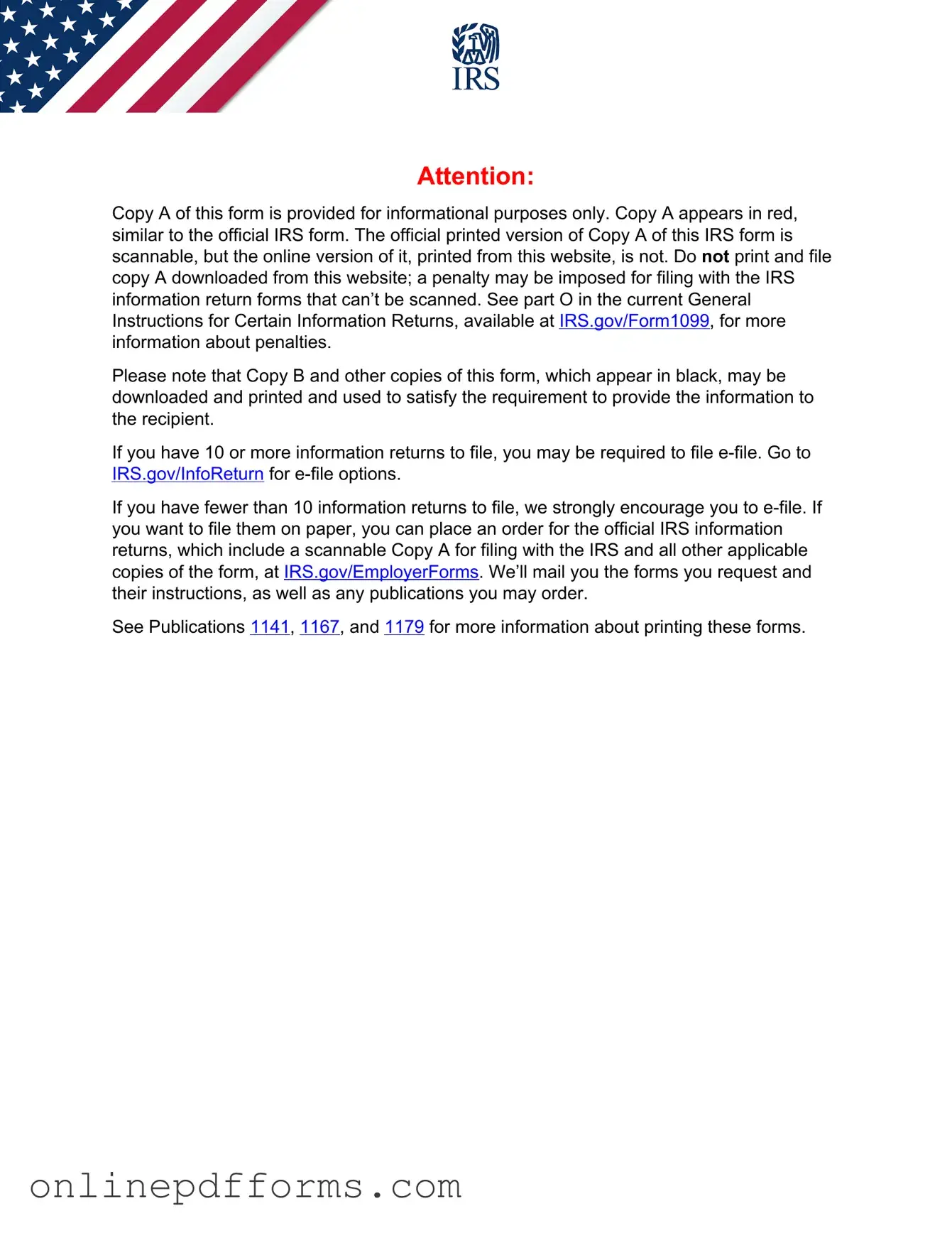The IRS 1099-NEC form is similar to the 1099-MISC in that both are used to report income received by non-employees. The 1099-NEC specifically targets payments made to independent contractors, freelancers, and other self-employed individuals. When a business pays $600 or more to an individual for services, it must issue a 1099-NEC, making it essential for accurate tax reporting. This form came into use in 2020, separating non-employee compensation from the 1099-MISC to simplify reporting processes.
The 1099-DIV form is another document that shares similarities with the 1099-MISC. It is used to report dividends and distributions received by shareholders. When a company pays dividends to its investors, it must issue a 1099-DIV if the total exceeds $10. Like the 1099-MISC, this form helps the IRS track income that may not come from traditional employment, ensuring that individuals report all their earnings accurately.
The 1099-INT form also resembles the 1099-MISC. It is used to report interest income earned from banks, credit unions, and other financial institutions. If a person earns $10 or more in interest during the tax year, the financial institution must issue a 1099-INT. This form helps taxpayers understand their interest earnings and ensures that they report this income on their tax returns.
The 1099-G form is issued for government payments, such as unemployment compensation or tax refunds. Similar to the 1099-MISC, it provides the IRS with information about income that may not be reported through standard employment. If a taxpayer receives unemployment benefits, the state will issue a 1099-G to ensure that this income is reported accurately on their tax return.
The 1099-R form is used to report distributions from retirement plans, including pensions and IRAs. Like the 1099-MISC, it ensures that the IRS is aware of funds received outside of regular employment. If a person withdraws money from a retirement account, the financial institution will issue a 1099-R, which helps taxpayers account for their retirement income when filing taxes.
The 1099-S form is similar in that it reports proceeds from real estate transactions. When a property is sold, the closing agent typically issues a 1099-S to report the sale to the IRS. This form helps track income from real estate sales, ensuring that sellers report any capital gains or losses accurately on their tax returns.
Understanding the documentation related to vehicle ownership is essential, and for those dealing with vehicle sales in Nevada, the Auto Bill of Sale Forms play a pivotal role in ensuring that all necessary details are accurately recorded and legally recognized during the transfer process.
The 1099-B form is used to report proceeds from broker and barter exchange transactions. It provides details about the sale of stocks, bonds, and other securities. Like the 1099-MISC, the 1099-B helps the IRS track income that may not be reported through traditional employment. Taxpayers must report gains or losses from these transactions, making the 1099-B an important document for accurate tax reporting.
The 1099-C form is issued for canceled debts. When a creditor forgives a debt of $600 or more, they must issue a 1099-C to the debtor. This form is crucial because canceled debt is often considered taxable income. Just like the 1099-MISC, the 1099-C helps ensure that all income, even that which comes from forgiven debts, is reported to the IRS.
Finally, the 1099-MSA form is used to report distributions from medical savings accounts. Similar to the 1099-MISC, it provides the IRS with information about funds received outside of regular employment. When a distribution is made from a medical savings account, the financial institution must issue a 1099-MSA, ensuring that taxpayers report this income correctly on their tax returns.
